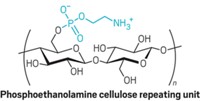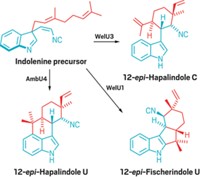Advertisement
Grab your lab coat. Let's get started
Welcome!
Welcome!
Create an account below to get 6 C&EN articles per month, receive newsletters and more - all free.
It seems this is your first time logging in online. Please enter the following information to continue.
As an ACS member you automatically get access to this site. All we need is few more details to create your reading experience.
Not you? Sign in with a different account.
Not you? Sign in with a different account.
ERROR 1
ERROR 1
ERROR 2
ERROR 2
ERROR 2
ERROR 2
ERROR 2
Password and Confirm password must match.
If you have an ACS member number, please enter it here so we can link this account to your membership. (optional)
ERROR 2
ACS values your privacy. By submitting your information, you are gaining access to C&EN and subscribing to our weekly newsletter. We use the information you provide to make your reading experience better, and we will never sell your data to third party members.
Synthesis
Fungal Enzyme Deconstructed
April 14, 2008
| A version of this story appeared in
Volume 86, Issue 15
The antibiotic erythromycin and other products of a ubiquitous family of enzymes known as polyketide synthases are produced in a fundamentally different way in fungi than they are in bacteria. A team led by Craig A. Townsend at Johns Hopkins University has now teased apart the individual functions of each active domain in a fungal polyketide synthase that produces the carcinogen aflatoxin B1 (shown). Such an accomplishment gives scientists a broad framework with which to understand how fungal enzymes operate (Science 2008, 320, 243). In bacteria, each catalytic domain in polyketide synthases performs a single synthetic operation that leads progressively toward the end product. Fungal polyketide synthases, on the other hand, reuse certain domains in iterations of catalytic cycles. The group "deconstructed"—dissected and reconstituted—the enzyme into seven catalytic domains and examined the functions of each using mass spectrometry to monitor the steps along the reaction pathway.






Join the conversation
Contact the reporter
Submit a Letter to the Editor for publication
Engage with us on Twitter